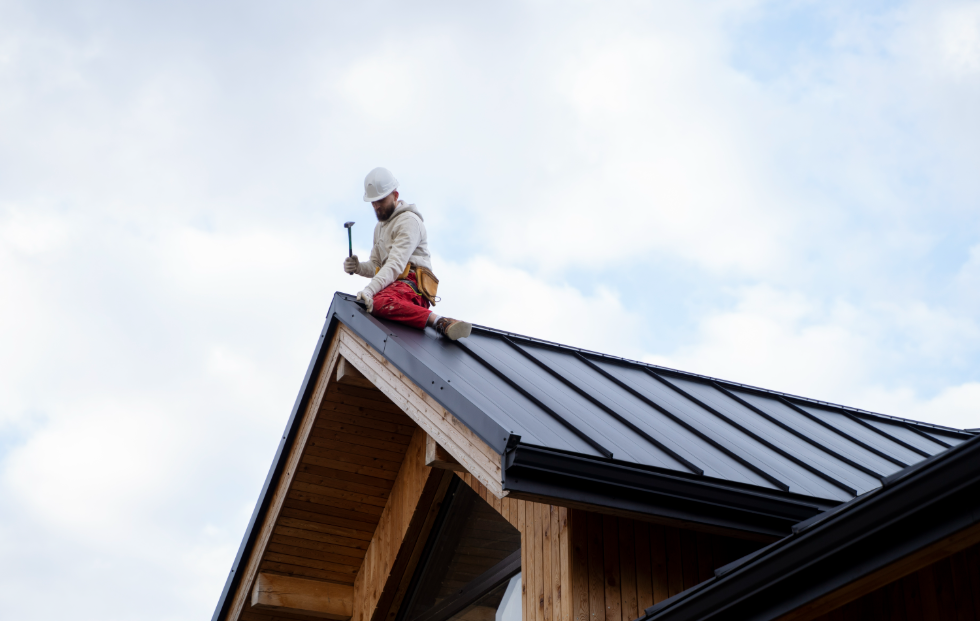Your roof protects everything beneath it – your family, your belongings, your home’s structure. So when damage starts to show, it’s only natural to wonder “should I repair the roof or replace it entirely?”
This guide will help you make that decision confidently. We’ll cover signs to look for, factors to consider, and when it makes sense to invest in a full replacement.
Roof Repair vs Roof Replacement
| Factor | Roof Repair | Roof Replacement |
| Best for | Localized damage or minor wear | Widespread damage or aged roofs |
| Roof Age | Typically under 15 years old | Usually over 20 years old |
| Cost | Lower upfront cost | Higher initial investment |
| Time to Complete | Often completed in a few hours | Typically takes 1–3 days |
| Longevity of Solution | Short- to medium-term fix | Long-term solution (20+ years) |
| Impact on Energy Efficiency | Minimal impact | Can improve insulation and reduce energy bills |
| Curb Appeal for Resale | Limited change unless visible | Increases home value and buyer appeal |
| Insurance Coverage | May be partially covered (depends on cause) | style=”padding: 10px; border: 1px solid #d9d9d9;”May be covered if storm damage or structural failure |
| Common Triggers | Missing shingles, flashing issues, minor leaks | Sagging structure, multiple leaks, aged material |
How Do You Know If Your Roof Needs Repair or Replacement?
Every roof wears out eventually, but not every problem means a full replacement is needed. The first step is figuring out what kind of damage you’re dealing with.
You may only need a roof repair if:
- The damage is limited to one area (like water stains on ceilings or walls.)
- The roof is under 15 years old.
- There are no recurring leaks or structural concerns.
- You’ve kept up with routine maintenance.
If these sound like your situation, repairing your roof could extend its life for several more years saving you time and money.
When Is a Simple Roof Repair the Right Choice?
Roof repairs are often the best solution when:
- The problem is isolated, not widespread.
- You notice a small leak, but there’s no ceiling damage.
- Shingles are cracked or missing in just one area.
- You’ve had no prior roofing issues.
Example: If a storm knocked off a few shingles or flashing, a repair can usually be done quickly and affordably, no full replacement needed.
What Are the Signs That Point to a Full Roof Replacement?
Not all roofing problems can be solved with a quick repair. In many cases, the root issue lies in poor installation or substandard workmanship, something we commonly find even on relatively new roofs. If your roof is showing any of the following symptoms, a full replacement may be the most cost-effective solution:
- The roof is 20 years or older, or even newer but showing premature wear.
- You’ve had multiple leaks or recurring repair needs.
- Shingles are curling, blistering, or falling off across large sections.
- You see dark streaks, moss growth, or signs of wood rot.
- There’s water damage in your attic or ceiling.
- Energy bills have spiked, possibly due to poor ventilation or insulation.
Pro tip: If more than 25–30% of your roof is damaged, or if issues stem from improper installation, a full replacement now could save you the hassle of ongoing repair costs later.
What Should You Consider Before Making a Final Decision?
Still weighing the pros and cons of roof repair vs roof replacement? Here are a few key things to keep in mind:
- Roof Age: Newer roofs often just need repairs; older ones may be nearing the end of their lifespan.
- Extent of Damage: A few damaged shingles? Repair. Widespread issues? Consider replacement.
- Budget vs. Long-Term Value: Frequent repairs add up. A new roof is a bigger upfront cost, but it often saves money over time.
- Future Plans: Planning to sell your home? A new roof boosts curb appeal and resale value.
- Roofing Material: Asphalt roofs last 15–30 years; metal and tile last longer.
- Insurance: Damage from storms or accidents might be covered. Wear and tear usually isn’t.
Note: Our Asphalt Shingles have a 50 year warranty while different brands don’t last longer.
When Should You Take Emergency Roof Repairs Seriously?
If your roof has just been hit by a storm or you notice sudden water intrusion, act fast. Delaying emergency repairs can lead to:
- Mold and mildew buildup.
- Wood rot and structural damage.
- Ceiling stains and interior damage.
Don’t DIY emergency repairs. Call a licensed roofer to tarp the area or complete temporary fixes until a full inspection can be done.
Related Read: How to Choose a Roofing Contractor
Still Unsure? Could a Roof Inspection Help You Decide?
Yes. If you’re on the fence, a professional roof inspection is the best next step. It gives you a clear, unbiased understanding of what’s going on up there.
A thorough inspection can tell you:
- Where damage is located.
- If a repair is still viable.
- How many years your current roof may have left.
Final Thoughts
The right choice depends on your roof’s age, condition, and your long-term goals. A simple repair may be all you need to restore protection. But if your roof is aging or damage is widespread, a full roof replacement could save you more in the long run.
Explore: Roofing Services




















